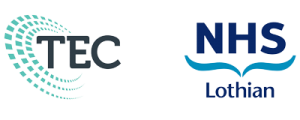Information
on Eating Disorders

Treatment
Treatment for an eating disorder should be evidence based. This means the treatment should be grounded in research evidencing good outcomes for a majority of people.
The National Institute for Health and Care Excellence (NICE) Guidelines inform clinicians about what treatment options to take. The guidelines are for English clinicians, however are commonly used in Scotland, Ireland and Wales.
Scotland also utilises the Matrix which is a guide to support clinicians in delivering evidence based psychological therapies within Scottish NHS health boards.
Eating Disorder Treatment for people aged 18 and under
The current first line recommendation for the treatment of anorexia and bulimia in people aged 18 and under are:
- Anorexia nervosa focused family therapy (FT-AN) or bulimia nervosa focused family therapy.
Family Based Treatment (or the Maudsley model) would fit into this type of treatment. You can read about this in more detail in the Family Based Treatment section.
However, this may not be appropriate therefore the following treatment options have also been shown to be effective and successful at treating eating disorders as a second line recommendation:
- Individual Cognitive Behavioural Therapy for Eating Disorders (CBT-ED or CBT-E) OR Adolescent Focused Psychotherapy for Anorexia Nervosa (AFP-AN)
The NICE Guidelines (2017) recommend that if a person has atypical anorexia or falls into the OFSED category, treatment should be based on the closest eating disorder (i.e anorexia or bulimia). They also have specific recommendations for diabetic young people.
Eating Disorder Treatment for people aged 18 and over
For adults, the current first line recommendations for treatment in anorexia are:
- Individual Cognitive Behavioural Therapy for Eating Disorders (CBT-ED or CBT-E);
- Maudsley Anorexia Nervosa Treatment for Adults (MANTRA); or
- Specialist Supportive Clinical Management (SSCCM).
For adults, the current first line recommendations for treatment of bulimia are:
- Bulimia focused guided self help (such as overcoming bulimia, Cooper, 2009); or
- CBT-ED.
The NICE Guidelines (2017) recommend that if a person has atypical anorexia or falls into the OFSED category, treatment should be based on the closest eating disorder (i.e anorexia or bulimia).
Family Based Treatment in more detail
Family Based Treatment (FBT) or the Maudsley Approach/Family Therapy is a well researched treatment option developed by Daniel Le Grange and James Lock. Many CAMHS clinicians across Scotland have had specialist training in FBT. It focuses on parents/carers and siblings as being a key support to promote recovery from an eating disorder. This treatment usually takes 6 to 12 months involving the whole family, initially starting with weekly sessions, or several sessions in a week, then moving to less frequent sessions e.g. fortnightly or monthly.
It uses 3 phases of treatment:
- Weight Restoration – parent/carers taking all control over food and meal times.
- Returning control of eating back to the young person.
- Supporting the young person to develop and recover autonomy and identity.
The core principles underpinning the FBT approach are:
-
- No blame: noone caused the eating disorder.
- Externalisation: separate the young person from the eating disorder.
- Family is key: the family are the best resource to support recovery.
- Everyone involved: Each family member has a key role in supporting recovery.
Further Reading:
Other Treatment in More detail
Family Therapy (FT): Family therapy can be used to treat eating disorders, however it should have an eating disorder focus instead of general family therapy. This should cover similar principles to FBT.
Adolescent Focused Therapy (AFT) or Adolescent Focused Psychotherapy for Anorexia Nervosa: This is an individual therapy. Although it is not the first line treatment for teenagers, which is usually FBT, it has been shown to be more effective than other individual therapies. This approach usually lasts 12- 18 months and focuses on similar 3 stages like FBT however, the adolescent is in control. Family members may be seen separately in order to support the young person’s recovery.
Cognitive Behavioural Therapy (CBT); It should be noted that if a person is receiving CBT for treatment of an eating disorder this should be eating disorder focused CBT and not generic CBT. CBT for eating disorders usually takes around 20-40 weeks. It is an individual treatment that focuses on thinking patterns and behaviours of the young person and how the eating disorder may affect them.
Individual Psychological Treatment: unless listed above such as AFT or CBT, no other individual approach is currently recommended for the treatment of eating disorders in young people, particularly whilst a young person is underweight or displays many eating disorder behaviours.
Maudsley Anorexia Nervosa Treatment for Adults (MANTRA) is for adults. It involves weekly sessions based and guided on the MANTRA workbook which encourages collaborative working between the person and their therapist. It involves education about nutrition, symptom and behaviour management, encouragement to explore identity out with an eating disorder and some family/carer involvement to assist them in supporting their loved one.
Specialist Supportive Clinical Management (SSCCM) is for adults. It involves weekly sessions working with the therapist to identify and assess key problems with the aim of restoring weight, recognising links between eating behaviours and symptoms and provides psychoeducational and nutritional advice.
Tier 4 Services, i.e.:
- Inpatient
- Day Services
- Intensive Treatment/Home Treatment Services
The above are what you may have heard referred to as “Tier 4” services in a CAMHS setting. Clinical guidance recommends that young people with an eating disorder are treated in the community and remain at home, as much as possible, where and when it is possible and safe to do so. However, in the early stages of treatment, or when in crisis, the above services may be needed if there are physical or mental health risks. Tier 4 services may also be required when a person is unable to recover weight at home, which may be due to many reasons, or their mental health deteriorates to an extent that means they can’t keep themselves safe. Your local services should have a website where you can find out more information about the services provided there.
Mental Health Act
The Mental Health Act (2003) (Scotland) is used when someone is at significant risk to themselves or others, and is not accepting treatment. The Act can be used to assess and then deliver treatment. The Mental Welfare Commission for Scotland has lots more information about the different kind of acts which you can find out more about by clicking here to go their website.
This may be required if someone is struggling to eat and/or not willing to attend treatment or is at physical risk, such as presenting as suicidal or medically unstable due to an eating disorder.
The Mental Health Act is different across the UK so if you are reading outside of Scotland, you should be aware that the Mental Health Act used in your country might be slightly different. We know that being placed under the Mental Health Act does not affect outcomes for young people; people can still recover even if they have been sectioned. The Act also allows people to have their wishes heard and meets their rights. You click here to read more about advocacy on this website.
As a parent, you have rights under the Mental Health Act. You can find out more about these rights by clicking the following links to carer’s groups such as:
